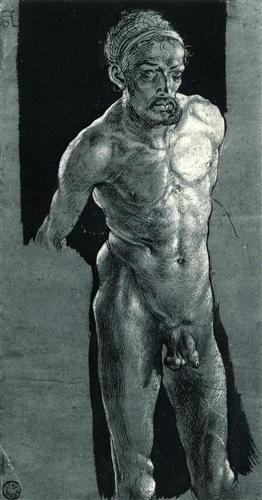 |
| Caravaggio, David with the Head of Goliath, 1610 |
If I ever commit murder, I would not think to paint a piece of artwork as penance, but that is what Michelangelo Merisi de Caravaggio did. After being accused of murder, Caravaggio painted this work in order to gain a papal pardon. He was granted the pardon, but died before given the fortunate news.
Caravaggio's portrayal of David and Goliath differs from the typical story of the two. I was told of their story in Sunday school when I was but a diminutive, gullible child. The story goes as any underdog story would: the youngest boy of a sheep herder fights a giant of a man and miraculously kills him with a slingshot, which is a good story for a little kid and all. But looking back on it reminds me of the manner in which children are raised. I was brought up thinking that the world was good and happy and no matter what everything will turn out my way. That. is. wrong. Caravaggio's David exhibits the exact distaste for reality as I do. The majority of the world is corrupt and horrible. The black background behind David perfectly shows that as despite his victory, the world is still just as dark before Goliath's death.









_-_Google_Art_Project.jpg)

